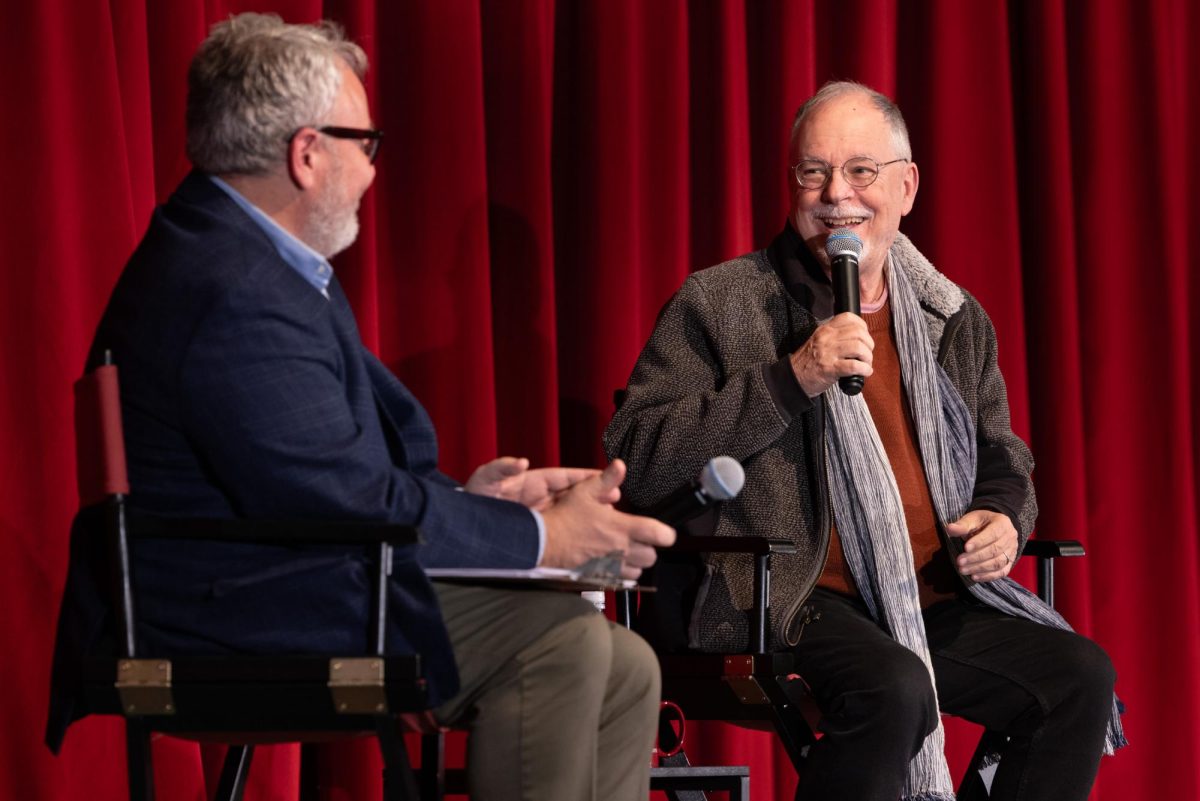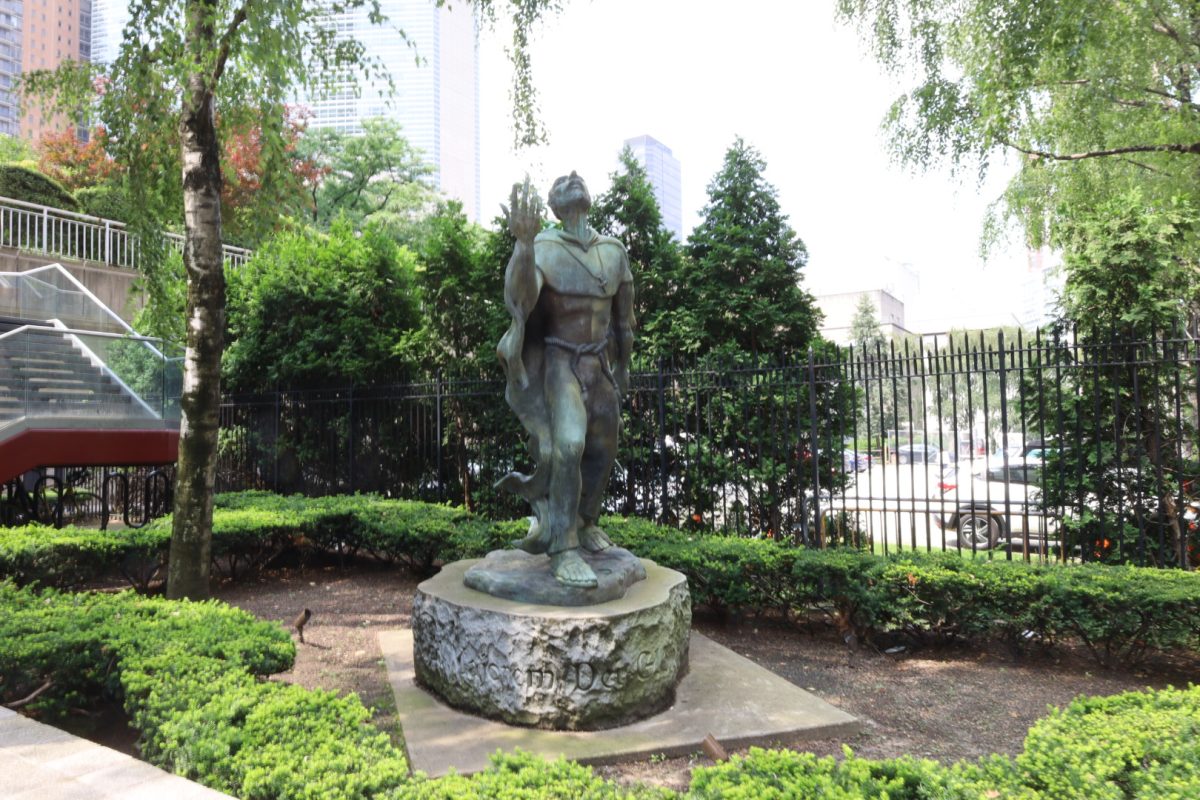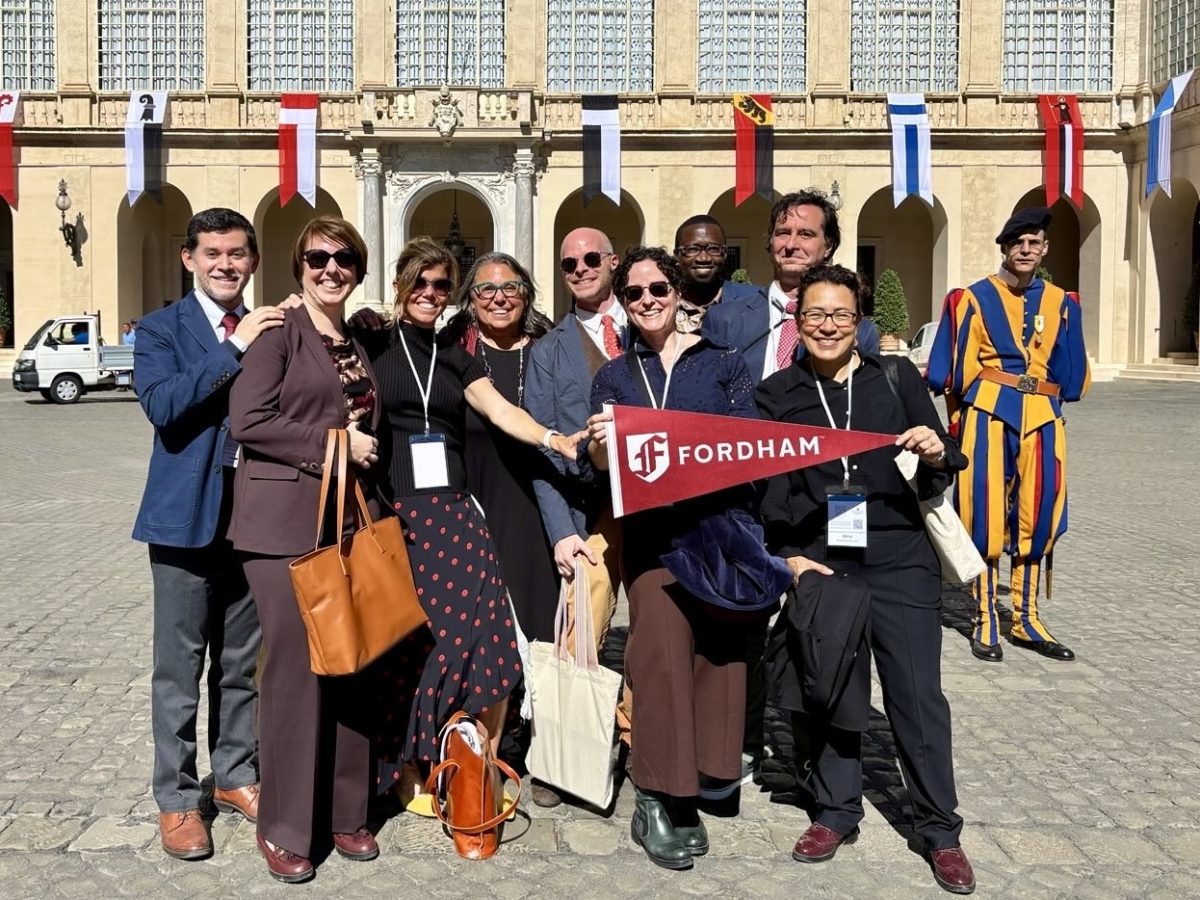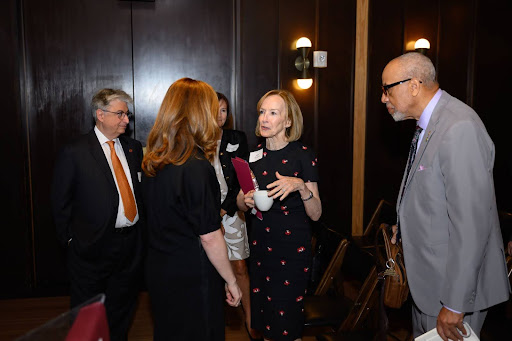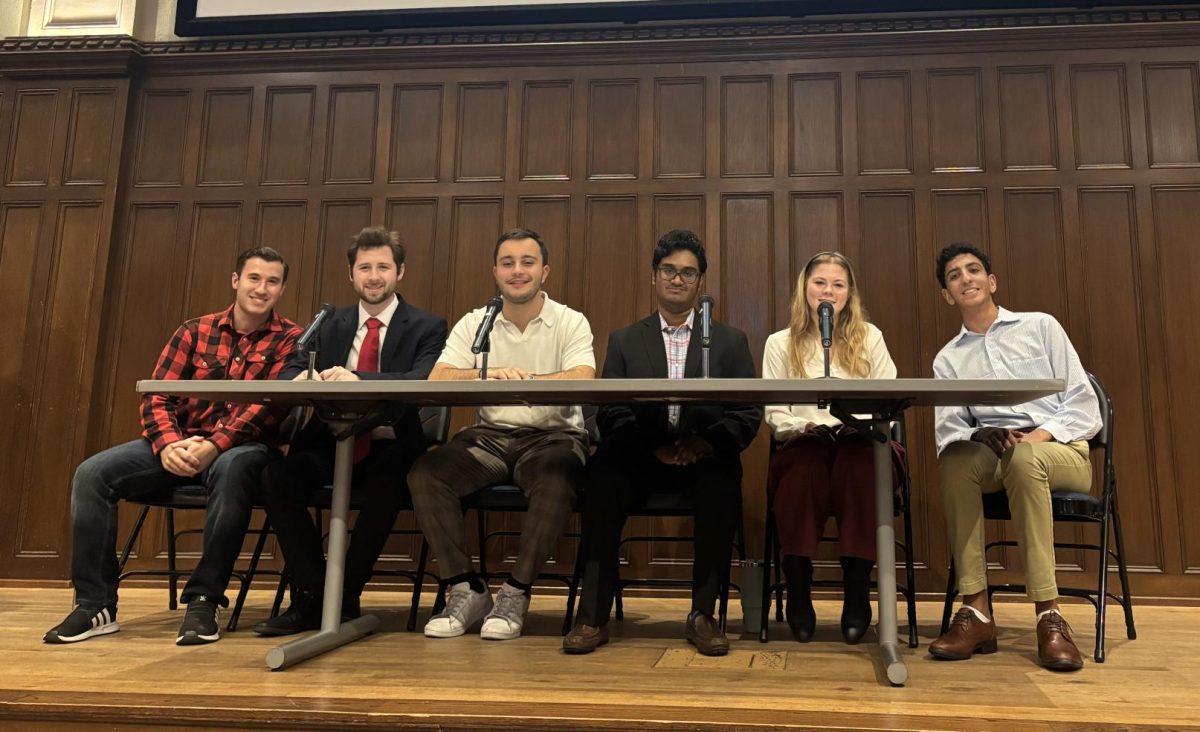By Katie Meyer
On Tuesday, several groups of Fordham students braved rainy, dreary weather and schlepped downtown for a cause they say cannot be ignored: fair wages. They were attending national coalition Fight for $15’s official Day of Action, which included three major protests throughout the day and drew hundreds of protestors, all fighting for better pay.
Students involved were affiliated with three primary groups: the Rose Hill chapter of Fight for $15, Fordham Students United (FSU) and Fordham Faculty Forward.
All came from different backgrounds. FSU supports and advocates for a varied assemblage of causes and describes itself on Facebook as an “intersectional coalition of student leaders, activists, faculty and alumni.” Fordham Faculty Forward is a subdivision of a larger national organization, which is dedicated to raising adjunct wages. Fight for $15 more generally aims to raise the minimum wage to $15 an hour nationwide with a special emphasis on raising the wages of fast food workers.
But all these student groups, as they joined with hundreds of other protestors at various points throughout the day, were united under one cause. As Mohan Seshadri, FCRH ’16, a member of both FSU and Fordham Faculty Forward, said, the idea behind the protests transcended ideologies.
“A living wage is important because we all have a right to live, ‘to be human,’ and to take care of ourselves and our families,” Seshadri, who played a large role in mobilizing students for the event, said. “This is largely impossible under NYC’s, and the U.S.’s in general, minimum wage and labor policies…Many still barely afford food for themselves and their families. Wage theft is also a huge problem, as are workplace injuries and intimidation by employers. This is why it’s vital to have not just $15 an hour, but a union as well.”
The Day of Action started early Tuesday morning, with students meeting to catch a bus from Rose Hill at 4 a.m. They were in Brooklyn by 5 a.m., and congregated with other protestors at Cadman Plaza Park. From there, they walked to a Brooklyn McDonalds, where they rallied, singing songs and chanting poetry. New York City Mayor Bill de Blasio also made an appearance and gave a speech, as did City Comptroller Scott Stringer, several local union leaders, fast food workers and various others.
After the first movement wrapped up around 7:30 a.m., die-hard protestors had a few hours to rest and regroup before the next action shortly before noon. This time, the protestors assembled in Harlem.
The focus shifted in this segment, to economic justice, immigration and race issues. Seshadri described the gathering as “less of a rally than a solemn occasion to mark the passing of those we’ve lost due to our lack of economic justice, racial justice, and immigration justice.”
The third and last portion of the New York Day of Action cumulated in Manhattan, with a rally at Foley Square that was dubbed the March on Broadway. It ended with the protestors marching south via Broadway, heading for Wall Street.
Seshadri said that as important as it was for Fordham students to show solidarity with underpaid workers throughout New York City, there were also important causes a little closer to home that were represented on Tuesday.
“Previous Ram articles have covered how Fordham treats its adjuncts, from the low pay, to the great number of adjuncts below the poverty line, to the highly-stressful environment caused by job uncertainty and instability,” he said.
“Not only does this go against our values as men and women for others, but it also negatively impacts Fordham students by creating a climate in which it is extremely hard for Fordham’s adjuncts to both devote their full effort to each Fordham class and simply survive, let alone thrive.”
In the end, he said, the activism all goes back to Fordham’s Jesuit values.
“Many of the problems faced by people on campus and in the Bronx are the same as those faced by people across our nation,” he said.
“Since as a Jesuit University we have a mandate to recognize the dignity of others, promote justice, alleviate poverty, and protect human rights, we need to acknowledge and fight the inequalities around us. This necessarily includes a living wage for all.”



































































































































































































